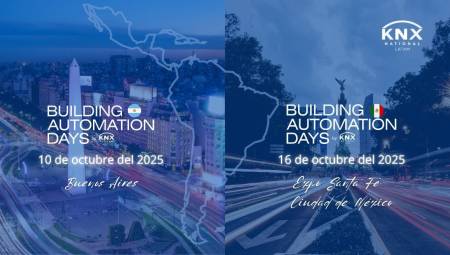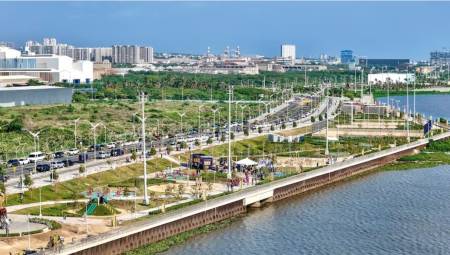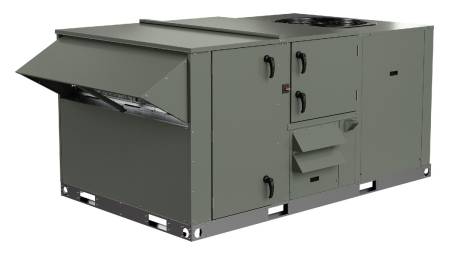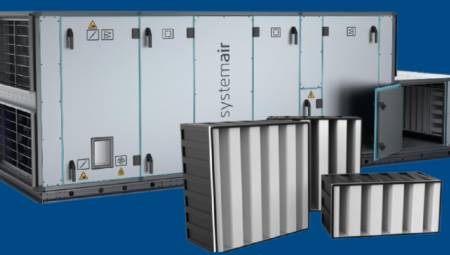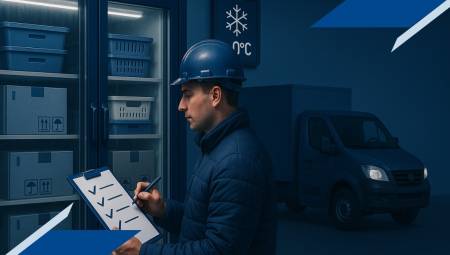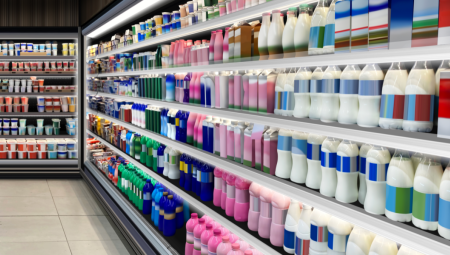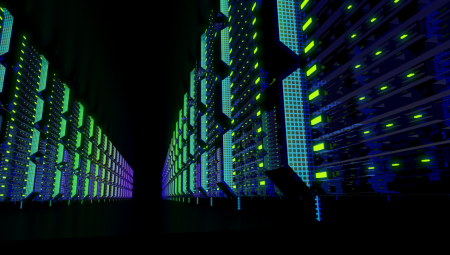Control and automation systems are an important part of the chain of the comfort process within a space, controlling and generating critical information for the analysis and validation of production processes, hence the need for their correct integration into the different activities of the building
The budget is one of the most common questions that building owners encounter, since from there the difference between offering the highest index of comfort and service or not doing so will start. Derived from this, in recent years, frequently, we find investors and operators who present strong financial initiatives that serve to balance the air conditioning (HVAC) and lighting projects, in terms of the issue of control and zoning, equipment sizing, operation strategies, resources and administration, points that achieve their harmony within a building, precisely thanks to automation systems.
These systems have achieved high ratings and the owners of the properties have regularly given themselves the task of installing them inside their buildings to provide a safe, comfortable and productive environment.
The demand not only stays there, its use proliferates in most commercial constructions, which have at least a basic on/off control for lighting and air conditioning through devices, such as switches and thermostats. There are several buildings that are equipped with controls that are based on timers for turning on the lighting, especially on days when they are unoccupied.
Control strategies
Control strategies and algorithms are responsible for keeping a variable controlled to operate within acceptable ranges and fulfill the desired functions. For example, a package unit keeps the space comfortable by controlling temperature, humidity and ventilation levels. The automatic operation of a control system allows the on, off, modulation and sequential start of mechanical and electrical equipment to comply with the cooling, heating and ventilation of the space, through the controllers and schedules depending on the requirements of the end user.
We can define two groups of control strategies:
Basic strategies
Evaluation of control set points Zone schedules Holiday schedules Reset injection temperature of variable volume systems Reset air injection pressure Reset ice/hot water injection temperature Reset ice/hot water injection pressure reset
Advanced strategies
Electrical demand control Ventilation demand control throughCO2 monitoring Natural ventilation control Emergency exit lighting control Cooling towers Optimisation of lighting systems to eliminate parasitic loads
Within the advanced control strategies, we will talk a little about Ventilation Demand Control throughCO2 monitoring, a key point for buildings seeking LEED Certification.
Ventilation demand control is a safety strategy for all commercial buildings, where the amount of outside air flowing in a building is modulated, usually based on the measurement of theCO2 levels of the conditioned space. This strategy shows great potential for energy savings in buildings that have high occupancy levels and are also in extreme climates. In general, ventilation demand control has a return on investment ranging from two years to five, including the installation and programming of sensors and controllers.
Strategy Description Features Set point Outside air increases when the differential ofCO2 concentration levels approach the design set point Outside air returns to its initial levels when theCO2 concentration differential falls below the design set point Only for Unizona systems Used in highly occupied facilities that reach peaks quickly (eg. Theaters) Proportional Outside air begins to increase when concentration increases to 100-200 ppm above theCO2 levels of outside air Inversely proportional to CO2 differential Maximum outside air intake occurswhen co2 level is in the design set point Works for most applications Proportional-integral Similar to proportional, but outdoor air is based on the differential ofCO2 concentration levels, as well as the change time between these levels Rapid response to changes Provides greater energy savings and comfort More sophisticated, more complex control algorithm-
Main components to carry out this control strategy
Installation ofCO2 Sensors in the area
Enabling the modulation of the outdoor air damper through the device.
Install a controller for the modulation of the outdoor air intake based on the readings of the CO2 sensor levels.
The operation of ventilation demand control depends on where theCO2 sensors are located, both inside and outside, since the amount of outside air allowed to enter the area is derived from the difference in the levels of these sensors.
This system is used in buildings where occupancy varies constantly and which have extreme weather conditions. Long periods of low occupancy: provides great opportunities to reduce the intake of outdoor air and therefore have energy savings. If the climate is moderate, then the energy expended conditions a minimum intake of outside air.
During the winter season, ventilation demand control can be integrated with the economizer function, where, during certain periods, outside air can provide cooling, leaving behind ice water resources and/or direct expansion equipment.
Recently, the concept of integrating different systems into buildings receives more attention from operators and investors. However, it is unclear how its integration offers potential savings beyond the technology used for the different energy-saving topics mentioned below. (see table 2)
Concept in the reduction of energy consumption Technology used Automatic control function Lighting control based on occupancy sensors Optimization of configuration parameters, such as schedules and set points Lighting control based on outdoor light sensor Elimination of unnecessary lighting Commissioning Lighting control based on occupancy sensors Optimization of configuration parameters, such as schedules and set points Lighting control based on outdoor light sensor Energy audit Heating elimination,unnecessary cooling and ventilation
Commissioning Adjustment of operation parameters against design Fault detection and diagnostics Commissioning Review of dampers Optimization of configuration parameters, such as schedules and set points Adjustment of operating parameters against design parameters in outdoor light sensor General review of the building Reduction of the intakeexcessive outside air
Commissioning Damper Review Ventilation Demand Control Duct Leak Diagnostics HVAC System Audit
When the different systems of a building are integrated from the design, they will undoubtedly help to reduce the cost of installation, since these types of systems can share information through the same data infrastructure. Likewise, they will contribute to the potential savings of the operator's training, by working on a single platform all the systems of the building.
Within the control strategies it is important to consider the sequences of operation that could occur with the security systems, both on the energy saving side and on the human safety side. For example, when the smoke detection system locates fire in some area of the building, we send alarms to the automation system to modify the operation of the air conditioning equipment, while the emergency lights are turned on to indicate the emergency exit of the building.
So-called smart buildings are getting more and more attention thanks to their promise to reduce energy consumption and keep operation and maintenance costs under control while improving the quality of the environment.


